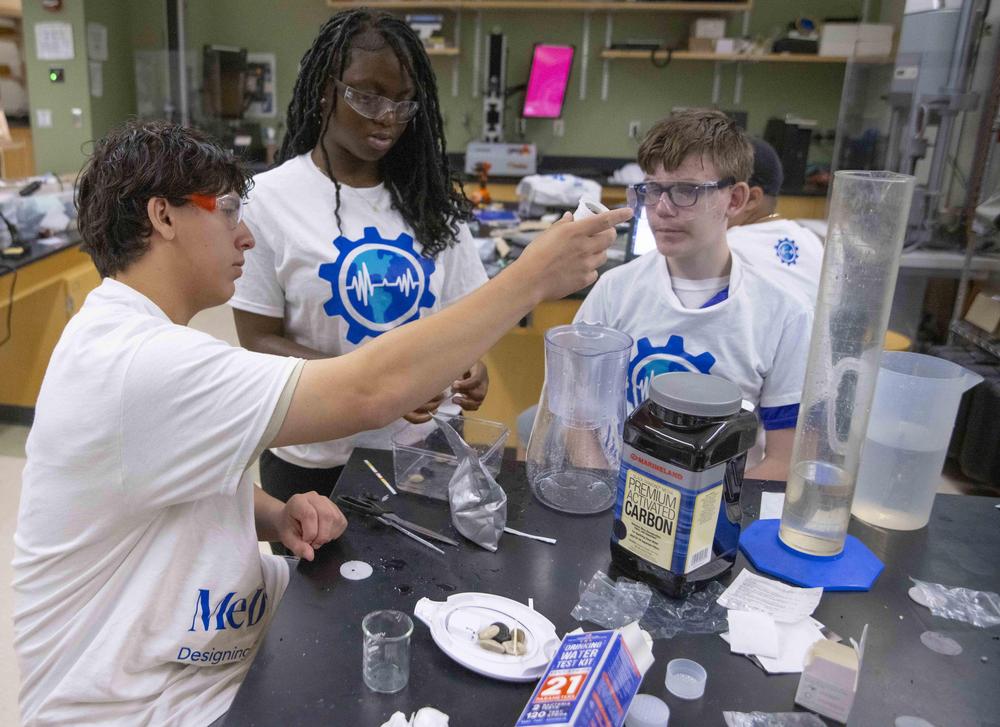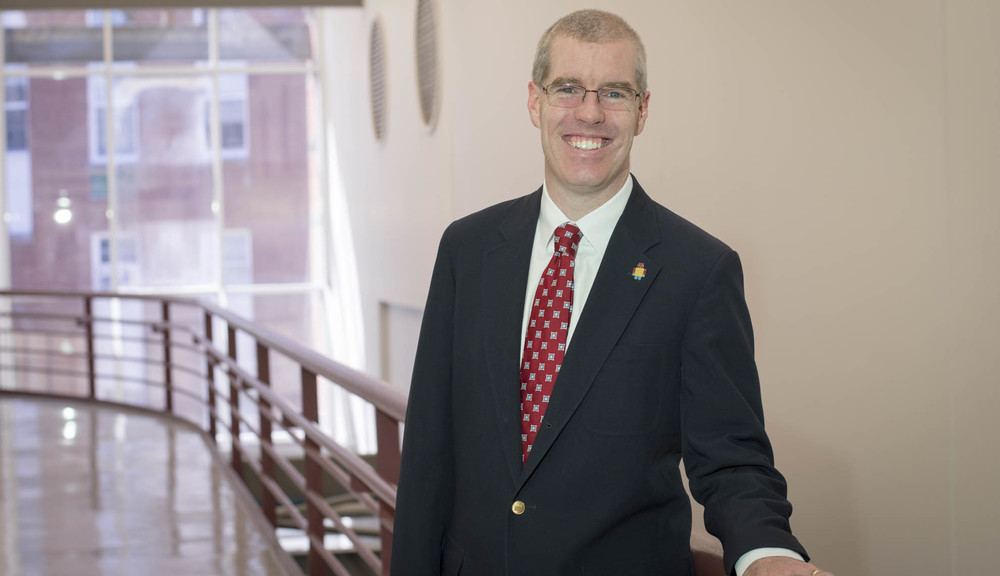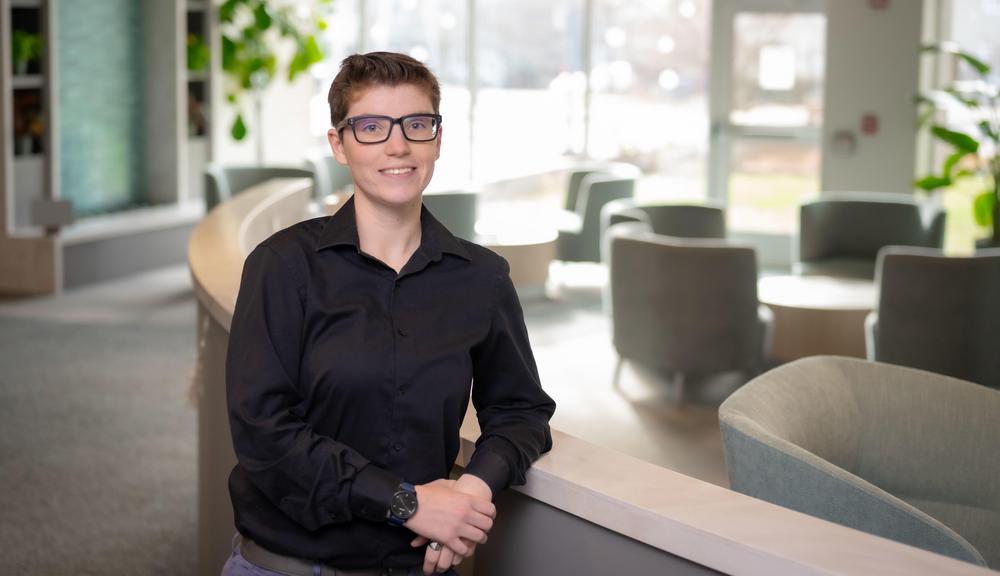What do the gingerbread man, red cabbage, and abstract art have in common? They are all tools that can be used to help K–12 students learn science, technology, engineering, and math (STEM) concepts—according to presenters at the 2015 AweSTEM! conference for educators on March 16.
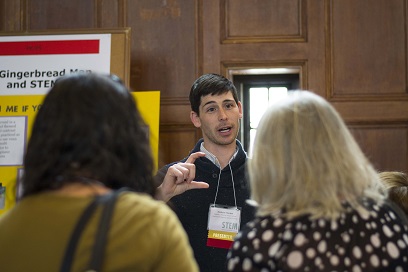
Presenter Andrew Hacket, a teacher at the Thomas Prince
School in Princeton, engages participants in dialogue.
Run by the STEM Education Center at WPI, AweSTEM! celebrates the accomplishments of STEM teachers and provides opportunities for them to network and learn about innovative ideas in education. More than 150 K–12 teachers and administrators attended this year’s event.
The theme for AweSTEM! 2015, “What best engages students in STEM fields,” focused on how teachers can best bring STEM subjects to life and make meaningful connections to engage students.
Attendees were able to visit with 20 presenters spread out across WPI’s Alden Memorial Hall. Presentations showcased activities and programs for subject-specific classes as well as ways to integrate STEM into other subjects in elementary, middle, and high school.
Many presenters were teachers themselves who demonstrated and discussed successful lessons from their classes.
Christina Kristoff and Andrew Hacket, second grade teachers at Thomas Prince School in Princeton, shared a lesson that they use to introduce elementary school children to engineering concepts utilizing the Gingerbread Man fairytale.

Kristin Goppel, associate director of summer programs at WPI,
speaks with a visiting teacher.
“After we read the story, students design a boat to help the gingerbread man cross the river,” says Kristoff. “They draw it on paper and then build it from materials like bottles and paper plates—then we test it out in a tub of water to see if it floats.”
Students also design a bridge for the gingerbread man to cross using toothpicks and gumdrops.
“The students really get into the activity, and what’s interesting is that those who usually struggle tend to shine on this project,” says Kristoff.
Jackie Bonneau, a science teacher at the Massachusetts Academy of Math and Science at WPI, gave hands-on demonstrations of exercises she uses to engage middle and high school students in chemistry and physics at home. She showed how students can create board games using the periodic table of elements, find examples of faulty physics in movies, and design their own pH test kits using common household substances, like red cabbage and spices.
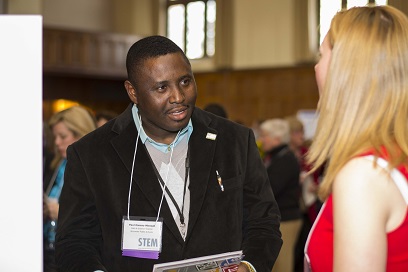
Paul Owusu Mensah, a Worcester Public Schools teacher, speaks
with presenter Erin Da Silvaneto , a teacher at the Center
Elementary School in Stow.
“Often students just see science as hard, but these activities make scientific topics exciting and engage the students by letting them have fun,” says Bonneau.
Another project that has received glowing approval from students was presented by Susan Russo, a mathematics teacher at Holy Name Junior/Senior High School. Russo’s students use GeoGebra, a free mathematical modeling program, to design moving works of graphical art based on algebraic functions.
“The students really engage with the assignment and with each other. They all want to see what everyone else has created,” says Russo. “Students from other classes who come into the room afterwards are also curious and ask when they will have the chance to make the designs!”
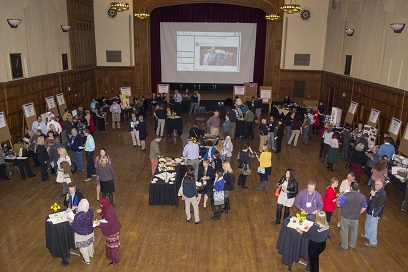
Presenters and attendees filled Alden Hall.
Additional activities featured at the conference ranged from building a model Spanish-style home using scale measurements to designing a portable water purification device, and from programming LEGO robots to finding solutions to geographical challenges in Asian countries.
Attendees were also able to get their pictures taken with WPI mascot Gompei and learn about the many opportunities and resources available for teachers through WPI, including professional development workshops, master’s degrees for educators, research experiences, classroom tools, and programs for student groups.
Martha Cyr, director of the STEM Center, occasionally asks teachers to stop and share ideas with each other, as well.
“I love hearing about everyone’s experiences and learning about their inventive projects,” says Cyr. “We’re honored to be able to celebrate the great work that these teachers have done.”
